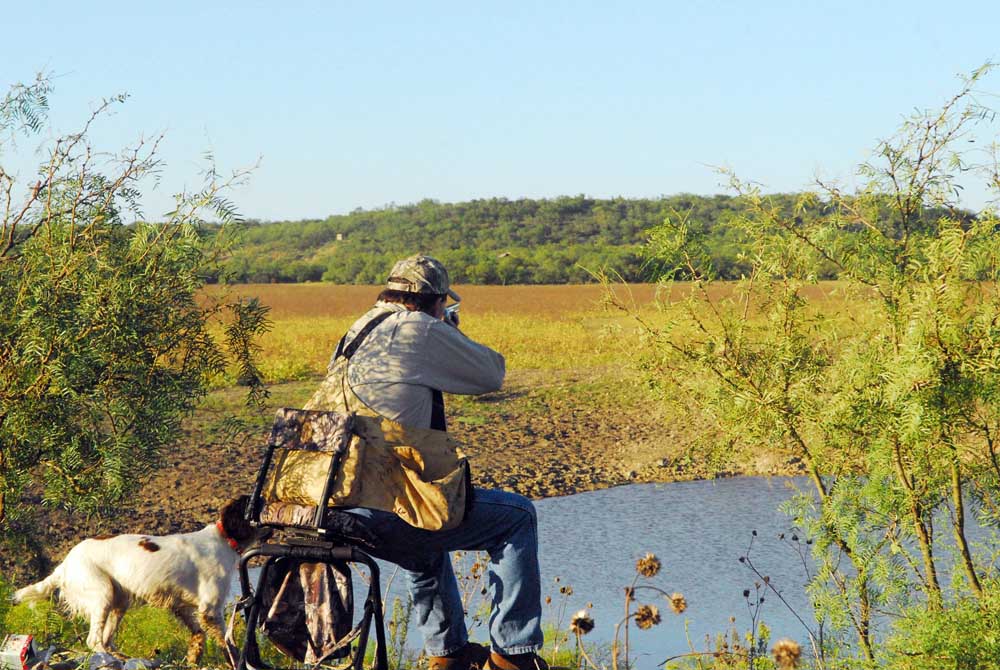Big Bang Theory:
Published 11:45 pm Friday, August 23, 2024

- Mourning dove hunters have a better chance of success using No. 7 1/2s or No. 8 shot with an improved cylinder choke. (Steve Knight/Tyler Morning Telegraph)
Success and failure in dove hunting starts with being in a field full of doves. After that it comes down to knowing how to get a good lead on a bird, and having the right ammunition for the situation.
Whether you are hunting a field with doves is up to Mother Nature and your outfitter, and do not even ask me how to get the proper lead. I am what is called an instinct shooter. If I were to give any advice, and it is universal, it would be to continue swinging the gun after pulling the trigger. That seems to be the biggest mistake among shooters who consistently miss in shotgun sports.
Let the arguments begin when it comes to ammunition.
In a testament to a huge turnaround, last year Texas dove hunters killed an estimated 6.5 million mourning doves and an additional 1.8 million white-winged doves. That is quite a jump from the previous five-year average when hunters killed an average 3.1 million mourning doves and 1.2 million whitewings each season. Still dove hunting is more of a social event for some hunters and does not often include hunters who are not as proficient with a shotgun as maybe duck hunting or quail hunting. And that is Ok.
“There are two types of Indians, hunters and gathers and not all are hunters,” joked outfitter Justin Hill of Ranger Creek Goose in Haskell.
Along with his waterfowl business, Hill has also been guiding about 1,600 dove hunters a season over three counties north of Abilene since 1998.
Like most outfitters he has come to learn that the number of shells at a hunter’s feet is the best way to determine how good a shoot they had. While some will have their 15-bird limit using a box of shells or less, the average hunter is going to shoot about 20 percent, about five birds per box, and that is on mourning doves flying low over a field and not pass shooting high-flying whitewings.
“Most of them still shoot a 12 gauge, but there are more starting to shoot 28s and 20s,” Hill explained.
Although a 12-gauge shotgun is a lot of gun for a bird weighing just 4 to 5 ounces, it is still the most common shotgun because of its versatility. There is not a bird in North America you cannot hunt with a 12 gauge.
But with improved ammunition and screw-in choke options the same can be said for any shotgun, and neither the 20 or the 28 have the bulk or kick of the 12.
No matter what shotgun a hunter uses, Hill’s advice on what shell to buy for shooting in his fields is simple these days.
“Buy the cheapest stuff you can find. Ammunition has gotten so expensive. It does not matter. It isn’t pass shooting like whitewings,” Hill said.
Looking around at box store prices, it looks like so-called dove loads are going to run $10 a box and up this fall as the cost of what was once an affordable hunt gets more expensive.
Of course, in dove hunting the 2 ¾-inch shell is industry standard. Anything larger is overkill and going to be painful at the end of the day.
And while a lot of hunters worry about powder loads and speeds, for mourning dove hunting it is all about pellets. There are a lot of pellet options for shotguns, but Hill said mourning dove hunters’ best options are No. 7 1/2s or 8s. He said for whitewings No. 6s are the best option for passing shots.
Going back to gauges, here comes the argument for smaller is better if you buy the right shells. Whether you are shooting a 12 or 28, an ounce of shot is an ounce, or about 410 pellets of No. 8s and 350 or 7 1/2s.
The problem is that all pellets are not equal. A hard, well-rounded pellet is going to result in the best pattern, but the only way to tell this is through trial and error. It is best done on the range shooting a static target or clays, but that seldom happens.
Dove are a fast bird, capable of reaching speeds up to 55 miles per hour. That compares to about 35 mph for quail and 30-35 for teal. So a good pattern, along with an appropriate lead for the situation are important.
When it comes to maximizing the pellets in a pattern Hill suggests an improved cylinder followed by a modified. Over/under shooters often prefer the IC choke first backed up by a modified.
From there the best advice is to wear clothing that breaks up your form, run decoys if you want early in the season, and most importantly listen to your guide.
The season opens Sept. 1 in the Central and North zones, and Sept. 14 in the South Zone. The special white-winged dove season in South Texas opens Sept. 1-2 and Sept. 6-8.
For more information on dove hunts or waterfowl hunts, contact Hill at 325-260-8626 or Justin@rangercreekgoose.com.






